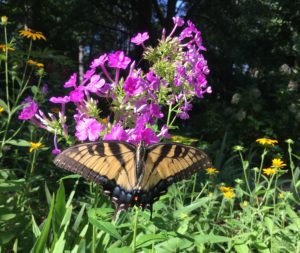 Yesterday I was cutting flowers to bring into the house when a butterfly landed on a stalk of phlox that I had just cut, almost as if to say “wait, wait, one more sip.”
Yesterday I was cutting flowers to bring into the house when a butterfly landed on a stalk of phlox that I had just cut, almost as if to say “wait, wait, one more sip.”
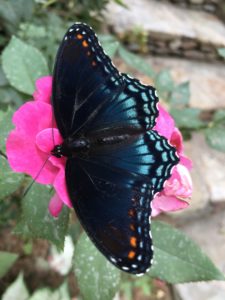
To walk through my field of phlox is to literally, walk with the butterflies as they slowly flitter from one blossom to the next. The vast majority of them are swallowtails. I mistakenly thought that I was looking at both the black and the yellow Eastern tiger swallowtails but then I found out that the female of the Eastern tiger can be either yellow or black. I do have true Black swallowtails in my garden, but they are much smaller than the Eastern.
The yellow Eastern tiger swallowtail is the state butterfly for Georgia (and Delaware, Virginia, South Carolina and North Carolina.) It is a highly successful (and environmentally stable) butterfly as it is not as picky as the beleaguered Monarch in what it sips and feeds on. Tiger swallowtails will pollinate a huge number of flowers, including garden phlox. They seem to prefer pink and red flowers but are considered “generalists” or perhaps opportunists, as they will use many different nectar plants.
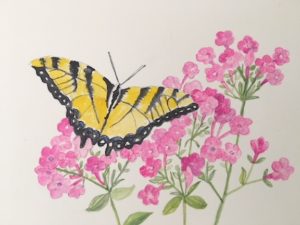 Females lay small green eggs singly on host plants such as tulip poplar, wild black cherry, ash, willow and sweet bay. The caterpillars are brown and white when young, turning green with black eyespots as they age. This species usually broods 2 – 3 times a year in our region, spending the cold winter months hibernating in the chrysalis stage.
Females lay small green eggs singly on host plants such as tulip poplar, wild black cherry, ash, willow and sweet bay. The caterpillars are brown and white when young, turning green with black eyespots as they age. This species usually broods 2 – 3 times a year in our region, spending the cold winter months hibernating in the chrysalis stage.
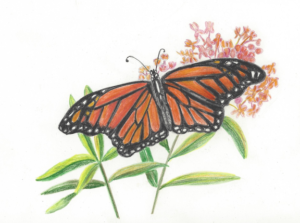
Mid to late summer is an excellent time to see all kinds of butterflies. The Monarch, which feeds only on species of milkweeds, migrates to Mexico and can only be seen in our part of the country during spring and fall migration flights.
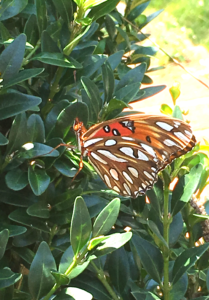
The Gulf fritillary is mostly orange with black spots which show silver on the undersides. This feeds on the native Passion flower vine. This species is very common in Florida and Texas. When the gulf fritillary feels threatened (as from a bird), it releases an odor that is noticeably unpleasant. It is an effective deterrent to a potential predator.
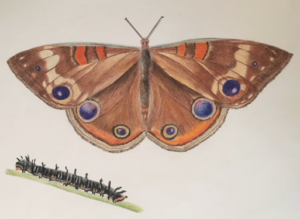
Common buckeyes can breed up to four times a year. Nectar plants include asters and coreopsis while the caterpillars feed on verbena, snapdragons and plantains.
I feel so lucky that so many butterflies call my garden home. I’m happy to provide both nectar and host plants in the hopes that they will come back year after year and find my garden “good to the last sip.”

Great article! So fun to see these beautiful critters in my inbox and have a bit of knowledge about them as well. Thanks!
Loved your article about these delicate, beautiful creatures. I find that butterflies happily make me pause and admire them as I do garden chores.